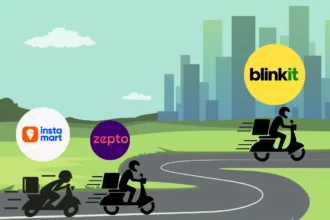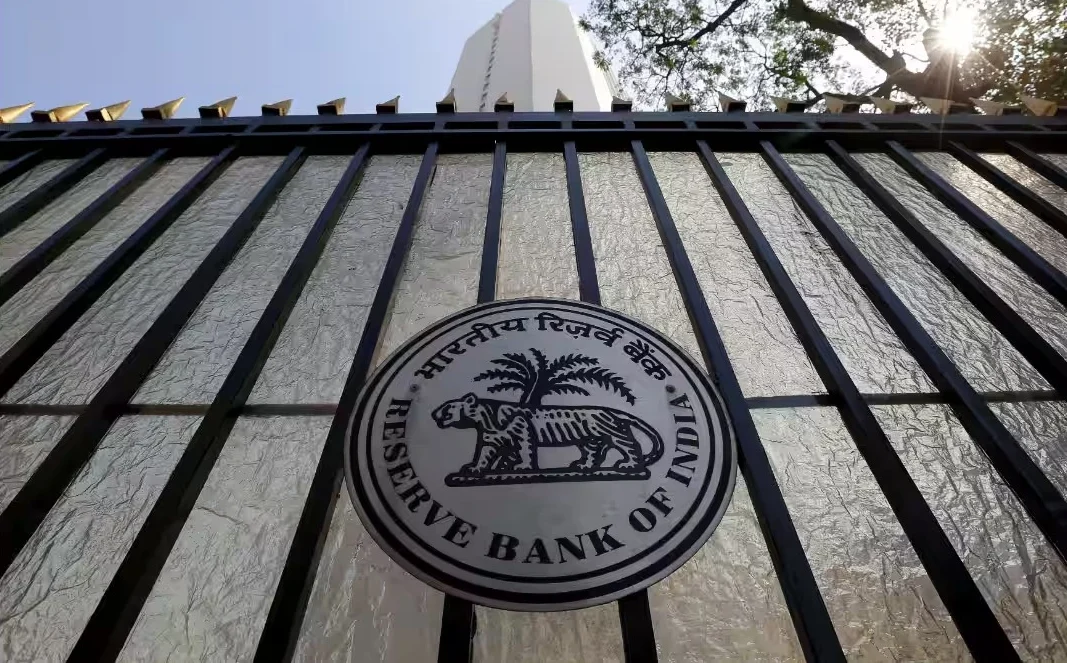Estimated Reading Time: 25-28 minutes ( 4,962 words)
Introduction
Borrowing in India is undergoing a silent revolution — one that’s transforming how individuals and small businesses access credit. Over the last five years, India has witnessed an explosion of fintech lenders, instant loan apps, and embedded credit options across platforms like Paytm, Amazon, and even ride-hailing apps. What once required physical paperwork and lengthy approval cycles can now happen in minutes, entirely on your smartphone. This digital wave has democratized credit, reaching first-time borrowers and Tier 2–3 cities where traditional banks rarely ventured.
But behind this frictionless convenience lies a major transformation led by the Reserve Bank of India (RBI). Concerned about rising defaults, predatory lending, and data misuse, the RBI has introduced comprehensive Digital Lending Guidelines — bringing structure, transparency, and accountability to what was once a largely unregulated market. These reforms are not just about compliance; they’re about reshaping the future of credit in one of the world’s fastest-growing lending ecosystems.
In this article, we’ll explore what’s driving this regulatory shift, how RBI’s new rules are redefining the digital lending landscape, and what it means for consumers, lenders, and investors alike. Whether you’re a borrower, fintech enthusiast, or investor, understanding this evolution is key — because the future of borrowing in India will be more digital, data-driven, and disciplined than ever before.

What is Digital Lending? 💸📱
Digital lending is exactly what it sounds like — borrowing made 100% digital. From applying and verifying your KYC, to getting your loan approved, disbursed, and repaid — everything happens online, often within minutes. No branch visits. No stacks of paperwork. Just your smartphone + a few taps.
According to the Reserve Bank of India (RBI), a “digital loan” is any loan offered through a Digital Lending App (DLA) or platform that operates via mobile or web channels. These platforms may be owned by a regulated lender (like a bank or NBFC) or by a fintech partner working with them. RBI’s 2022 guidelines now make it mandatory that loans must be disbursed only into the borrower’s bank account, ensuring transparency and borrower protection.
The RBI’s Working Group on Digital Lending (2021) went even deeper — describing it as the use of digital technology for credit assessment, approval, documentation, disbursement, repayment, and even customer service. In short: the entire loan journey — from “Apply” to “Approved” — happens through algorithms, APIs, and mobile dashboards rather than human clerks and counters.
In simpler words:
📲 Apply for a loan via your smartphone
✅ Upload Aadhaar & PAN for instant KYC
⚡ Get credit scored and approved in minutes
💰 Receive the amount directly in your bank
🔁 Repay through auto-debit, UPI, or app schedule
Example:
Let’s say you open an app like KreditBee, Paytm, or LazyPay. You apply for a ₹50,000 personal loan — the app checks your credit score, verifies your documents, and sends the money to your account, all in under 10 minutes.
💡 Quick Fact:
India’s digital lending market, valued at ~USD 270 billion in 2024, is projected to reach a whopping USD 720 billion by 2030 (source: BCG, Inc42).
Over 70% of new retail loans in India are now digitally originated — showing how fast this shift is happening.
In short: Digital lending = faster access, smarter scoring, and a fully paperless credit experience — but with new RBI rules ensuring it’s also safer and more transparent than ever before.
Why RBI is Pushing Digital Lending — Key Drivers 🇮🇳💡
RBI’s strong push toward regulated digital lending isn’t just about fintech hype — it’s a strategic move to modernize India’s credit ecosystem, protect consumers, and expand financial inclusion. Here’s what’s driving it 👇
⚙️ 1. Scale & Access — Credit for the Underserved
For decades, millions of Indians — especially gig workers, rural borrowers, and small business owners — were invisible to traditional banks. Digital lending changes that.
✅ Micro-ticket loans (₹500–₹50,000) can now reach users without collateral or lengthy documentation.
✅ Fintech-NBFC partnerships are expanding credit access to Tier 2, 3, and 4 towns.
✅ Platforms like KreditBee, ZestMoney, and Indifi have enabled first-time borrowers to access formal credit digitally.
📊 According to PwC India (2024), nearly 35% of digital borrowers are new-to-credit individuals — most from non-metro regions.
📲 2. Technology & Financial Inclusion — The Digital India Boost
India’s fintech revolution rides on three digital rails — Smartphones + Aadhaar + UPI. With over 750 million smartphone users, 1.3 billion Aadhaar-linked accounts, and 10+ billion UPI transactions monthly, the stage is set for frictionless lending.
- AI-driven credit scoring enables approval even for borrowers without a traditional credit history.
- UPI AutoPay, DigiLocker, and eSign simplify loan verification and repayment.
- This perfectly aligns with India’s “Digital Financial Inclusion” agenda and PM Jan Dhan Yojana goals.
💬 As per a McKinsey report (2024), India’s digital infrastructure has the potential to triple the number of active borrowers by 2030 — and RBI’s regulations ensure that this growth remains sustainable and secure.
⚠️ 3. Risks & Misbehavior — Cleaning Up the Market
Rapid fintech growth brought opportunity — but also chaos. Unregulated loan apps flooded the market between 2019–2022, many charging exorbitant interest (up to 200%), using coercive recovery tactics, and misusing personal data.
- A study by Nishith Desai Associates found hundreds of unlicensed apps operating without NBFC partnerships.
- Complaints of harassment, data leaks, and unauthorized deductions surged.
RBI’s response: a Digital Lending Framework (2022) — mandating direct disbursal to borrower bank accounts, clear disclosure of APR (Annual Percentage Rate), and strict data privacy norms. This ensures consumer trust and ethical fintech growth.
🧾 4. Regulatory Clarity & Supervision — Bringing Everyone Under One Roof
Before RBI’s intervention, fintech platforms operated in a grey area. Many weren’t NBFCs but “loan facilitators” or “tech intermediaries,” blurring responsibility lines.
Now, RBI’s guidelines bring all digital lending players under a transparent structure:
- Regulated Entities (REs) like banks/NBFCs are fully accountable.
- Lending Service Providers (LSPs) must disclose partnerships and fees clearly.
- Data storage, user consent, and grievance mechanisms are now legally enforced.
This clarity fosters long-term investor confidence and healthier innovation.
⚡ 5. Efficiency & Cost Reduction — Win-Win for Banks and Borrowers
Digital lending isn’t just safer — it’s cheaper and faster.
🏦 For banks and NBFCs, digital loan origination:
- Cuts operational costs by up to 40%,
- Reduces loan approval time from days to minutes,
- Improves collection efficiency through automation.
💰 For borrowers, it means instant access, lower costs, and better customer experience — aligning perfectly with India’s Digital Economy Vision 2030.
💡 Quick Fact:
India’s fintech credit is expected to grow from USD 270 billion (2024) to USD 720 billion (2030) (BCG & Inc42).
RBI’s regulatory framework ensures this growth is inclusive, transparent, and globally benchmarked.
In short:
RBI isn’t slowing fintech — it’s future-proofing it. By pushing for regulated digital lending, it’s creating a system that’s fast, fair, and financially inclusive, setting the stage for India to become the world’s most dynamic credit marketplace.
Latest Market Trends & Statistics (India + Global)
India
- India’s digital lending market is projected to grow from USD 270 billion in 2022 at a CAGR of around 22% to 2030. Economic Laws Practice
- Platform-market estimates: The India digital lending platform market revenue was USD 502.1 million in 2024 and is expected to reach USD 2,377.1 million by 2030 (CAGR ~30.2%). Grand View Research
- A report indicates digital lending constituted ~10% of total NBFC loans and ~2% of scheduled commercial bank loans as of 2023. PwC
- Some market commentary estimates India’s digital lending opportunity could hit USD 350 billion by 2025. The Unlisted Intel
Global
- The global digital lending platform market size was estimated at USD 10.91 billion in 2024 and is projected to reach USD 114.72 billion by 2034 (CAGR ~26.5%) according to one report. Precedence Research
- Embedded finance, BNPL (buy-now-pay-later), API-driven lending platforms are global growth drivers.
Key Fact Box
| Metric | Value | Source |
| India digital lending platform market (2024) | USD 502.1 million | Grand View Research |
| Projected India digital lending platform market (2030) | USD 2,377.1 million | Grand View Research |
| India total digital lending opportunity (est.) | USD 270 billion+ in 2022 base, 22% CAGR to 2030 | Economic Laws Practice |
| Global digital lending platform market (2024) | USD 10.91 billion | Precedence Research |
| Global market (2034 est) | USD 114.72 billion | Precedence Research |
The RBI’s New Framework: What’s Changing in 2025
The RBI has moved from guidelines to a more consolidated “Directions” framework:
What changed
- On 8 May 2025, RBI issued the Digital Lending Directions, 2025 (“DL Directions, 2025”) which consolidates earlier guidelines and adds new rules for transparency, distribution, data governance. Mondaq+2tclf.in+2
- The Directions apply to all regulated entities (banks, NBFCs, housing finance companies) when they engage in digital lending via modern channels. The Legal 500
- Key features include:
- Mandatory disclosure of key facts (interest rate, fees) and standardised “Key Facts Statement”. Lexology
- Caps and clarity around “Default Loss Guarantees” (DLG) or first-loss default guarantees by unregulated platforms. The Tribune+1
- Data localisation & cybersecurity: loan apps must store data on Indian servers; if off-shore then return within 24 hours, etc. The Tribune
- Public directory of digital lenders / lending apps ensuring transparency of regulated creditors. Mondaq
- Mandatory disclosure of key facts (interest rate, fees) and standardised “Key Facts Statement”. Lexology
Why it matters
- For borrowers: More clarity, less risk of surprise terms, stricter recovery practices.
- For lenders/fintechs: More compliance, potentially higher cost, but better regulatory acceptance and scale potential.
- For market: Better structure could unlock institutional capital and wider mainstreaming of digital credit.
How Borrowing Will Be Reshaped — 5 Key Impacts 🔄💰
RBI’s digital lending reforms are not just a policy update — they’re a complete reset of how India borrows. Over the next few years, lending will become faster, fairer, and more data-driven, but also more regulated and accountable. Here’s how the borrowing landscape is being reshaped 👇
⚡ 5.1 Faster, More Accessible Credit
Say goodbye to week-long loan approvals. Thanks to digital origination, AI-based auto-decisioning, and real-time UPI payment rails, getting a loan will soon be as fast as ordering food online.
- Borrowers can complete the entire loan journey in under 10 minutes, from application to disbursal.
- Auto-decision systems assess credit instantly using machine learning, cutting down manual review time.
- RBI-approved systems ensure disbursals go directly into verified bank accounts, reducing fraud.
📱 Who benefits most? Millennials, freelancers, and gig-economy workers who need instant access to small-ticket loans for personal or business use.
💬 Example: Platforms like CASHe, KreditBee, and Navi already offer instant personal loans up to ₹5 lakhs with paperless approval, powered by digital KYC and UPI-based disbursals.
🌍 5.2 Financial Inclusion for the Underserved
Perhaps the biggest impact — credit access for those who’ve never had it before.
India has millions of “thin-file” customers — individuals or micro-entrepreneurs with little or no formal credit history. Digital lending, powered by AI-driven underwriting and alternative data, changes that.
- Fintechs can now assess borrowers based on transaction data, utility payments, GST filings, and mobile behavior, not just CIBIL scores.
- Rural and semi-urban borrowers, women entrepreneurs, and blue-collar workers can now qualify for affordable credit.
📊 According to PwC India (2024), digital lending currently forms ~10% of total NBFC loan portfolios, but this share could triple by 2030 as inclusion deepens.
💡 Case in Point:
Fintechs like Kaleidofin and Turtlemint are using data from UPI and micro-savings apps to provide small working-capital loans to rural users — who were previously outside formal credit systems.
🔍 5.3 Transparency, Trust, and Fewer Hidden Fees
One of the biggest pain points in early digital lending was opacity — unclear charges, surprise penalties, and even unethical recovery practices. RBI’s new framework fixes this head-on.
- Lenders must clearly disclose all charges, interest rates (APR), and terms upfront.
- Borrowers receive Key Fact Statements (KFS) — summarizing their total costs in plain language.
- Apps must display customer care details, complaint redressal contacts, and partner NBFC names.
📑 According to SSRN Research (2023), nearly 40% of borrower complaints in 2021–22 related to hidden fees and harassment — a number expected to drop sharply under RBI’s oversight.
This shift restores trust and helps borrowers make informed credit decisions, creating a fairer lending ecosystem.
🏦 5.4 Fintechs Evolve from Lenders to Platforms
The RBI’s framework is also reshaping the role of fintechs. Instead of acting as unregulated “lenders,” most fintechs are pivoting to become:
- Loan Service Providers (LSPs): Managing tech, customer acquisition, and servicing for regulated banks/NBFCs.
- Banking-as-a-Service (BaaS) Platforms: Providing ready APIs and lending infrastructure to financial institutions.
This partnership model ensures innovation continues — but with accountability.
However, this evolution isn’t free:
⚙️ Compliance costs will rise, as fintechs must maintain transparency, data localization, and secure APIs.
🏗️ Yet, regulatory clarity encourages long-term collaborations — think HDFC–Paytm, ICICI–Amazon Pay, or Axis–Slice partnerships.
💬 Expert View:
“Fintechs are moving from disruptors to enablers — acting as the digital arms of traditional lenders,” notes Trilegal India’s 2024 Fintech Report.
🤖 5.5 Borrowing Costs, Risk Models & Recovery Will Evolve
As digital lending scales, so will data-driven risk management. Lenders will increasingly use AI, alternative data, and behavioral analytics to tailor offers and detect defaults early.
- Borrowers with strong repayment patterns will receive personalized, lower-cost credit offers.
- Those with weaker profiles may face stricter verification or higher interest, balancing inclusion with prudence.
- Recovery methods are shifting too — digital-first reminders, call-center mediation, and RBI-monitored recovery agents replacing aggressive tactics.
📊 According to BCG (2025), AI-led credit scoring could reduce default rates by up to 25%, while making risk-based pricing more efficient.
⚠️ Quick Fact: RBI’s new recovery guidelines now prohibit harassment, data exposure, or any third-party sharing without borrower consent — making recovery safer and more professional.
🚀 In Short:
RBI’s push is building a faster, fairer, and more financially inclusive lending system.
Borrowers get speed and safety, lenders gain efficiency and trust, and fintechs evolve into powerful digital partners — creating a new era where credit becomes as easy (and safe) as a UPI payment.
Case Studies: Digital Lending in Action
Case Study A: Micro-ticket personal loans via fintech app
A fintech app onboards a young professional in Bengaluru via smartphone, verifies KYC, uses transaction data, disburses ₹50,000 in 30 minutes. Under the new rules, the key facts statement is shown, default guarantee disclosures if applicable, and app stores data on Indian servers.
Implication: convenience + compliance.
Case Study B: Embedded credit in e-commerce checkout
A shopper buying electronics uses “Pay later” option via merchant, credit is offered by an NBFC through a digital platform. Under RBI’s framework, the aggregator must ensure borrower protection, fair practices and inform the customer of effective rate.
Implication: Embedded finance + regulated credit.

Opportunities & Risks for Borrowers, Fintechs, and Banks ⚖️💡
RBI’s digital lending framework is creating massive opportunities — but it also brings new challenges for every player in the ecosystem. Whether you’re a borrower, fintech innovator, or a traditional bank, the new rules are reshaping how you operate, compete, and grow. Let’s break it down 👇
| Stakeholder | Opportunities | Risks / Challenges |
| 👩💼 Borrowers (Individuals & MSMEs) | – Instant access to credit — from ₹500 microloans to ₹10L personal/business loans.- Greater choice with multiple RBI-registered lenders and transparent comparison tools.- Improved transparency through Key Fact Statements (KFS), standardized disclosure, and regulated data handling.- Lower costs via digital origination and competition among lenders. | – Debt traps if borrowers take multiple loans across platforms without tracking EMIs.- Hidden fine print in some apps (even if regulated).- Over-dependence on easy credit may hurt long-term financial discipline.- Data privacy risks if users give permissions without reading terms. |
| 💻 Fintechs & Lending Platforms | – Explosive scalability via partnerships with banks/NBFCs under the new Lending Service Provider (LSP) model.- Global investor interest as India becomes a testbed for digital lending innovation.- New business models like Buy Now Pay Later (BNPL), embedded lending, and AI-based credit scoring.- Cross-border expansion potential, exporting India’s fintech infrastructure to developing markets. | – Higher compliance & audit costs under RBI’s 2022 framework (data storage, reporting, audits).- Regulatory uncertainty — evolving rules may limit flexibility or delay product launches.- Competitive pressure as global players (Google Pay, OneCard, Slice, Amazon Pay) enter.- Dependency on partner NBFCs, reducing autonomy. |
| 🏦 Banks & NBFCs (Regulated Entities) | – Lower origination costs and faster disbursals using fintech infrastructure.- Access to new borrower segments — millennials, gig workers, and rural borrowers via data-driven underwriting.- Improved efficiency using digital KYC, AI risk scoring, and automated collections.- Partnership opportunities with top fintechs for co-lending or white-label platforms. | – Technology risk from integration failures, cyber threats, or third-party dependency.- Credit risk from newer borrower segments with limited repayment history.- Legacy system friction — many banks still struggle to integrate API-first fintech models.- Regulatory accountability — banks remain legally responsible for fintech partners’ actions. |
💬 Expert Insight:
According to BCG (2025), India’s digital lending ecosystem could add $350 billion in new credit by 2030, but without responsible borrowing and risk management, defaults could rise by 15–20% in unregulated segments. RBI’s framework aims to balance both — growth and guardrails.
🧠 Tip Box: Smart Borrowing in the Digital Era 💡
Before you hit “Apply” on that shiny loan app, keep these golden rules in mind 👇
✅ 1. Read the “Key Facts Statement” carefully.
Check interest rates, processing fees, and total repayment cost (APR) — no surprises later.
✅ 2. Verify the lender’s credentials.
Use the RBI Directory of Registered Lenders — ensure the app partners with a regulated NBFC or bank.
✅ 3. Beware of “too good to be true” offers.
Extremely low interest or “no document” loans can often hide predatory terms or data risks.
✅ 4. Understand your repayment schedule.
Know EMI dates, auto-debit terms, prepayment penalties, and late fees before you borrow.
✅ 5. Borrow only what you can repay comfortably.
Digital credit is convenient, but it’s still a financial obligation, not free money.
💡 Quick Fact:
As per PwC India (2024), nearly 1 in 5 digital borrowers in India have 3 or more active loans simultaneously — often unaware of overlapping EMIs. Smart borrowing habits will be the key to thriving in this new era.
In Short:
The RBI’s digital lending wave is unlocking faster credit, smarter innovation, and broader inclusion — but also demanding greater responsibility from every participant. Borrowers must stay informed, fintechs must stay compliant, and banks must stay agile — together shaping India’s next trillion-dollar lending revolution. 🚀
Step-by-Step Guide: How to Borrow Smart in the New Era 💳📲
Digital lending is convenient — but smart borrowing is what keeps you financially secure. As the RBI strengthens oversight, borrowers have more protection than ever. Still, the responsibility to choose wisely and repay responsibly rests with you. Here’s a step-by-step guide to navigate India’s new digital borrowing landscape like a pro 👇
🏦 Step 1: Check the Lender’s Credentials
Before applying for any loan, verify the lender’s legitimacy.
- Go to the RBI’s list of Registered NBFCs and Banks to confirm the lender’s name.
- Check if the app clearly mentions its partner NBFC or bank (every regulated app must do this under RBI’s 2022 framework).
- Avoid apps that don’t display a registered entity or ask for unnecessary permissions (like access to contacts or gallery).
✅ Why it matters: Fake or unregulated apps often misuse data, overcharge, or use coercive recovery tactics.
📜 Step 2: Read the Key Facts Statement (KFS) Carefully
Every regulated digital lender must now provide a Key Facts Statement — a concise one-page document that outlines:
- Interest rate (APR)
- Tenure and repayment frequency
- Processing fees, late fees, prepayment charges
- Total cost of borrowing (₹)
Take a few minutes to read it — this one step can save you from hidden fees or inflated EMIs.
✅ Pro tip: Compare APRs across apps; the lowest headline rate isn’t always the cheapest loan once fees are added.
🔍 Step 3: Borrow Only via Trusted Platforms
Choose apps with high ratings, transparent fee disclosures, and verified partnerships.
- Stick to platforms like Paytm, LazyPay, CASHe, KreditBee, or bank-backed apps.
- Avoid apps that promise instant approval with zero KYC — RBI mandates proper digital KYC.
✅ Why it matters: A trusted platform ensures data privacy, ethical recovery, and correct reporting to credit bureaus.
💰 Step 4: Set Auto-Debits or Smart Reminders
Digital loans allow auto-debit through UPI or bank mandate, ensuring on-time payments.
- Missed payments get reported quickly to credit bureaus (CIBIL, Experian).
- Even a single default can reduce your credit score by up to 100 points.
✅ Pro tip: Set a backup reminder on your phone 2–3 days before EMI date, especially if you rely on wallet or UPI balances.
📈 Step 5: Track Your Credit Score Regularly
With every digital loan or repayment, your credit footprint updates instantly.
- Use free tools from CRED, Paisabazaar, or Experian to check your CIBIL score.
- A score above 750 improves your chances for better rates and higher limits.
✅ Why it matters: Early detection of errors or defaults lets you dispute inaccuracies quickly.
⚠️ Step 6: Avoid Loan “Stacking”
With loans available at a tap, many borrowers fall into the multi-loan trap.
- Taking 3–4 small loans across apps can inflate your EMIs and hurt your score.
- Lenders track your Debt-to-Income (DTI) ratio; if it exceeds 40%, your creditworthiness drops.
✅ Rule of thumb: If your EMIs take up more than 1/3 of your monthly income, it’s time to pause borrowing.
⚖️ Step 7: Know Your Rights as a Digital Borrower
RBI’s Digital Lending Guidelines (2022) empower you with strong protections:
- Fair Practices: No hidden charges or unauthorized recovery methods.
- Right to Grievance Redressal: Every lender must display a nodal grievance officer on their website/app.
- Right to Privacy: Your data can’t be shared with third parties without consent.
✅ If wronged: File a complaint directly with the lender → escalate to RBI’s Ombudsman if unresolved in 30 days.
🧾 Step 8: Plan Repayments & Budget Wisely
Even small digital loans — like ₹5,000–₹10,000 BNPL credit — can snowball quickly if unmanaged.
- Keep a monthly repayment tracker to visualize all EMIs and due dates.
- Use auto-pay + reminders to stay consistent.
- Prioritize high-interest loans first (credit cards, short-term apps).
✅ Golden rule: Borrow only for productive needs — education, emergency, or business — not impulse purchases.
💡 Bonus Tip: Build Digital Credit Health
- Pay EMIs on time for 6–12 months — it builds strong digital credit behavior.
- Use apps that report repayment history to credit bureaus — it boosts your future loan eligibility.
- If possible, maintain a small secured product (like a credit card) to balance your credit mix.
🧭 In Summary:
The future of borrowing is digital, data-driven, and borrower-centric.
But in this fast-paced credit ecosystem, the smartest borrowers will be those who verify, compare, plan, and repay with discipline.
The RBI has set the guardrails — now it’s up to you to drive safely on the digital credit highway. 🚀💸
FAQs Section
1. What is the minimum amount to invest in mutual funds in India in 2025?
Most mutual funds in India allow Systematic Investment Plans (SIPs) starting from as little as ₹500 per month, and some fintech platforms (like Groww or Paytm Money) even enable micro-SIPs starting at ₹100.
For lump-sum investments, the minimum is typically ₹1,000–₹5,000, depending on the fund.
This flexibility makes mutual funds one of the most accessible investment options for beginners.
(Source: 5nance.com, Groww, AMFI India)💡
Tip: Start small with SIPs — consistency matters more than amount. Even ₹500/month compounds powerfully over time.
2. Is investing via SIP better than lump sum for a beginner?
Yes, in most cases. SIPs (Systematic Investment Plans) are ideal for beginners because they:
- Encourage discipline through regular, automatic investing.
- Enable rupee-cost averaging, buying more units when prices are low and fewer when high.
- Reduce the stress of market timing.
Lump-sum investing can work if you have a large one-time amount (like a bonus or inheritance) and are comfortable with short-term volatility.
For most new investors, SIPs are the safer and smarter way to start.
(Source: ET Money, Rushabh Financial)📊 Example: ₹5,000 SIP monthly for 10 years at 12% CAGR = ~₹11.6 lakh corpus.
3. How long should I stay invested in a mutual fund?
It depends on your goal and fund type:
- Equity funds: Ideally 5–7 years or more to ride out market ups and downs.
- Hybrid funds: Minimum 3–5 years.
- Debt or liquid funds: Suitable for 1–3 year goals.
Longer horizons allow compounding to work effectively and smoothen volatility.
(Source: FundsIndia, PrimeWealth)⏳ Rule of thumb: The longer your investment horizon, the higher your potential returns.
4. Are mutual fund returns guaranteed?
❌ No — mutual funds do not guarantee returns. They are market-linked instruments, meaning performance depends on the underlying assets (equities, bonds, etc.).
However, diversification, professional fund management, and disciplined SIP investing reduce risk over time.
(Source: AMFI India)⚠️ Always read the scheme’s offer document and riskometer before investing.
5. What is the difference between a direct plan and a regular plan?
| Feature | Direct Plan | Regular Plan |
| Distribution | Investor buys directly from AMC | Through broker/agent |
| Expense Ratio | Lower (no commission) | Higher (includes agent fee) |
| Returns | Higher in long term | Slightly lower due to fees |
| Ideal for | Informed investors | Beginners needing advice |
Direct plans are better for DIY investors comfortable researching funds themselves.
Over 10+ years, even a 0.5–1% lower expense ratio can add ₹1–2 lakh extra in returns.
(Source: AMFI, Zerodha Coin)💡 Tip: You can easily switch from a regular plan to a direct plan later.
6. How much should I allocate to equity vs debt mutual funds?
There’s no one-size-fits-all formula, but a general guideline is:
- Long-term goals (10+ years): 70–80% in equity, 20–30% in debt/hybrid funds.
- Medium-term goals (3–5 years): 40–60% equity, 40–60% debt/hybrid.
- Short-term goals (<3 years): Prefer debt or liquid funds entirely.
Your age, income stability, and risk tolerance matter.
(Source: PrimeWealth, Groww)🧮 Simple thumb rule: “100 – your age” = % of portfolio in equity.
7. When should I review or rebalance my mutual fund portfolio?
Ideally once every 6–12 months.
Review for:
- Performance: Is it beating its benchmark consistently?
- Expense ratio: Has it increased significantly?
- Goal alignment: Does the fund still fit your time horizon and risk profile?
Rebalance when your asset allocation deviates by more than ±5–10% from target.
(Source: PrimeWealth.co.in, ET Money)🧩 Example: If your 70% equity grows to 80%, rebalance by shifting 10% to debt funds.
8. What happens if I pick a bad mutual fund?
A poorly chosen fund might:
- Deliver lower returns than benchmark.
- Have high costs or frequent churn.
- Show inconsistent performance across market cycles.
Don’t panic — you can switch or redeem underperforming funds after 2–3 years.
Stick to trusted AMCs, diversified funds, and proven managers.
(Source: Value Research, Economic Times)
🧠 Tip: Use fund screeners like Morningstar or MoneyControl to compare long-term consistency, not just yearly returns.
9. Can NRIs invest in Indian mutual funds?
✅ Yes, NRIs can invest in Indian mutual funds — both on a repatriable and non-repatriable basis.
However, there are a few key conditions:
- Must complete KYC using passport, PAN, and overseas address proof.
- Transactions must be through NRE/NRO accounts.
- Some AMCs may not accept U.S. or Canada-based investors due to FATCA regulations.
(Source: iNRI, AMFI India)🌍 Always consult your tax advisor about double taxation and repatriation rules in your country of residence.
10. How do mutual funds compare to investing in individual stocks?
| Aspect | Mutual Funds | Stocks |
| Management | Professionally managed | Self-managed |
| Diversification | High | Low unless you own many stocks |
| Effort | Low | High (research, timing, analysis) |
| Risk | Moderate | High |
| Control | Low (fund manager decides) | Full control |
Mutual funds suit investors who want steady growth with lower effort, while stocks are for those willing to research deeply and handle volatility.
(Source: Bullsmart, Groww)💬 Pro Tip: Many investors start with mutual funds, then gradually diversify into direct stocks.
11. What tax benefits exist for mutual funds in India in 2025?
The Equity Linked Savings Scheme (ELSS) is the only mutual fund category that offers a tax deduction under Section 80C of the Income Tax Act, up to ₹1.5 lakh per year.
Other tax rules (as per Budget 2025 updates):
- Equity funds: Gains after 1 year = Long-Term Capital Gains (LTCG); taxed at 10% above ₹1 lakh/year.
- Debt funds: LTCG taxed at 20% with indexation (after 3 years).
- Hybrid funds: Taxed based on underlying equity exposure.
(Source: Income Tax Dept., ET Wealth)
🧾 Tip: ELSS funds have a 3-year lock-in, making them both tax-efficient and growth-oriented.
12. Is KYC mandatory for mutual fund investment?
✅ Yes. As per SEBI and AMFI regulations, Know Your Customer (KYC) is mandatory for all mutual fund investors in India.
Documents needed:
- PAN Card (mandatory)
- Aadhaar or Passport (for ID proof)
- Address proof (utility bill, bank statement, etc.)
You can complete e-KYC online in minutes through fund houses or KRA (KYC Registration Agency) websites.
(Source: AMFI, CAMS KRA)
📱 Example: Many fintech apps like Zerodha Coin, Groww, or ET Money complete KYC via video verification in under 5 minutes.
13. Can I withdraw my SIP anytime?
Yes — SIPs are fully flexible. You can pause, modify, or stop them anytime.
However, some fund categories like ELSS have a 3-year lock-in.
For non-locked funds, you can redeem units anytime, though you might pay:
- Exit load (0.5–1%) if withdrawn within 12 months.
- Tax on gains based on holding period and fund type.
(Source: Groww, Value Research)
⏳ Tip: Always check your scheme’s “Exit Load” section before redeeming.
14. What are some good beginner-friendly mutual fund types for 2025?
For new investors in India:
- Large-Cap Index Funds (e.g., Nifty 50 Index Fund) → Stable, low-cost.
- Flexi-Cap Funds → Balanced across large, mid, small caps.
- Hybrid Aggressive Funds → Mix of equity + debt.
- ELSS Funds → Tax-saving + growth.
(Source: MoneyControl, Economic Times)
🎯 Start with 1–2 funds, stay consistent for 12+ months before expanding your portfolio.
✅ Key Takeaway
Mutual funds are a powerful, flexible, and beginner-friendly way to grow wealth — but understanding the basics (costs, risk, taxes, and horizon) is key to long-term success.
Start small, stay consistent, review annually — and let compounding do the rest.
Summary / Key Takeaways
- Mutual funds are an excellent starting point for beginners in 2025 — they offer accessibility, diversification, professional management.
- Keep your goals clear, match fund type with horizon and risk-tolerance.
- SIPs are your friend: they build discipline and reduce timing risk.
- Choose funds using a checklist (objective, expense ratio, performance, manager, etc.).
- Review annually and rebalance — don’t just “set it and forget it”.
- Avoid chasing last-year’s hits or investing without a plan.
- For India-first audience: start with Indian mutual funds; later consider global exposure if needed.

Conclusion
Starting your investing journey with mutual funds in 2025 is both timely and wise — especially for Indian-focused readers who want to build wealth in a disciplined way. With the right fund, the right strategy (SIP), and the right mindset (long term, disciplined), you can set up a strong foundation.
share this article with a friend who’s thinking of investing but doesn’t know where to start.
Please leave a comment below if you have questions about specific funds, SIP amounts, or portfolio allocations — I’ll respond with practical advice.
References & Sources
- “Mutual Funds in India: The Ultimate Beginner’s Guide (2025 Edition)”, 5nance. 5nance.com
- “Beginner’s Guide to Mutual Fund Investment”, ClearTax. ClearTax
- “How to choose a mutual fund: A beginner’s simple step-by-step guide”, The Economic Times. The Economic Times
- “The Best Mutual Funds in India for 2025 – A Comprehensive Guide”, Imarticus. Imarticus
- “How To Invest In Mutual Funds Online, 5 Simple Steps To Start In 2025”, FundsIndia. FundsIndia
- “Beginner’s Guide to Mutual Funds”, Groww. Groww







